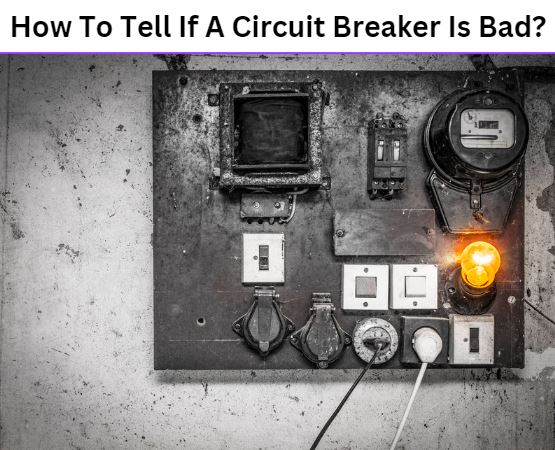How To Tell If A Circuit Breaker Is Bad?
Introduction:
In any electrical system, circuit breakers serve as crucial guardians, protecting circuits from overloads and potential hazards. However, like any component, they can degrade over time, potentially leading to malfunction. As electrical support engineers, it’s essential to discern the signs of a failing circuit breaker to ensure the safety and reliability of the electrical infrastructure.
Understanding the Function of Circuit Breakers:
Before delving into identifying faulty circuit breakers, it’s imperative to comprehend their primary function. Circuit breakers are designed to interrupt the flow of electricity when a fault occurs, preventing overheating, fires, or damage to electrical devices. They act as the first line of defense against electrical mishaps, safeguarding both property and lives.
Recognizing Signs of a Bad Circuit Breaker:

1- Frequent Tripping:
One of the most obvious indicators of a faulty circuit breaker is frequent tripping. While occasional tripping is normal, excessive tripping could signify an underlying issue such as overload, short circuit, or internal breaker problems.
2- Overheating:
Physically inspecting circuit breakers for signs of overheating is crucial. Burn marks, discoloration, or a hot touch are red flags indicating excessive heat buildup within the breaker. Overheating can result from loose connections, overloaded circuits, or internal component failure.
3-Tripping Without Load:
If a circuit breaker trips repeatedly without any apparent load or during periods of low electrical demand, it suggests an internal fault within the breaker itself. Such erratic behavior warrants immediate investigation to prevent potential hazards.
4- Buzzing or Humming Sounds:
Unusual sounds emanating from circuit breakers, such as buzzing or humming, often indicate loose connections, damaged components, or imminent failure. These auditory cues should prompt thorough inspection and possible replacement if necessary.
5- Physical Damage:
Visual inspection of circuit breakers may reveal physical damage such as cracks, chips, or bent components. Such damage compromises the integrity of the breaker and increases the risk of malfunction.
6- Age and Obsolescence:
Like all electrical equipment, circuit breakers have a finite lifespan. Aging breakers, particularly those nearing or exceeding their rated service life, are more susceptible to failure. Additionally, obsolete or outdated models may lack the robustness and safety features of modern counterparts, posing inherent risks.
7- Inconsistent Performance:
Inconsistencies in the performance of electrical circuits, such as intermittent power fluctuations or unexplained outages, could stem from malfunctioning circuit breakers. Thorough troubleshooting is essential to isolate the root cause and rectify the issue effectively.
Conclusion:
As electrical support engineers, our responsibility extends beyond mere troubleshooting; it encompasses proactive maintenance, risk mitigation, and ensuring the safety and reliability of electrical systems. Recognizing the signs of a faulty circuit breaker is paramount in averting potential disasters and upholding the integrity of electrical infrastructure. By staying vigilant, conducting regular inspections, and addressing issues promptly, we uphold the highest standards of electrical safety and professionalism.
 Electrical Engineering World Wiring a Brighter Tomorrow!
Electrical Engineering World Wiring a Brighter Tomorrow!